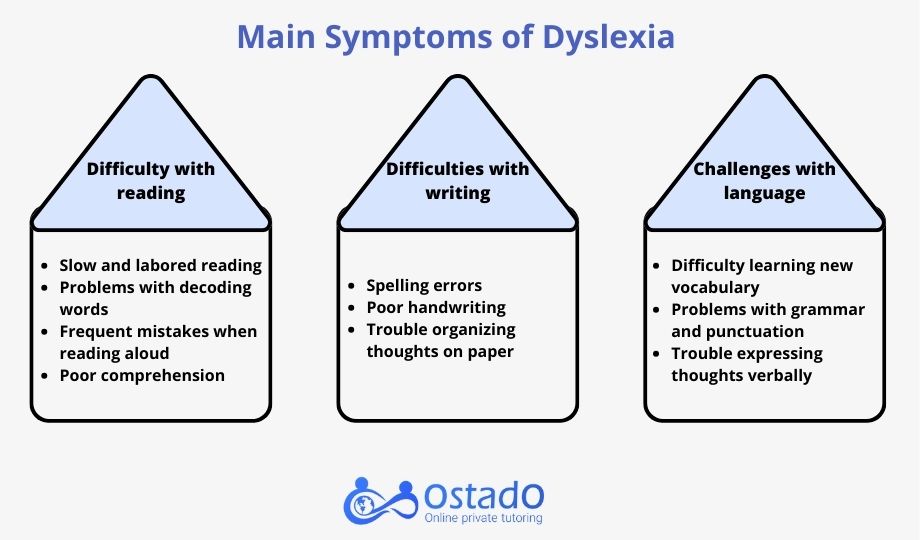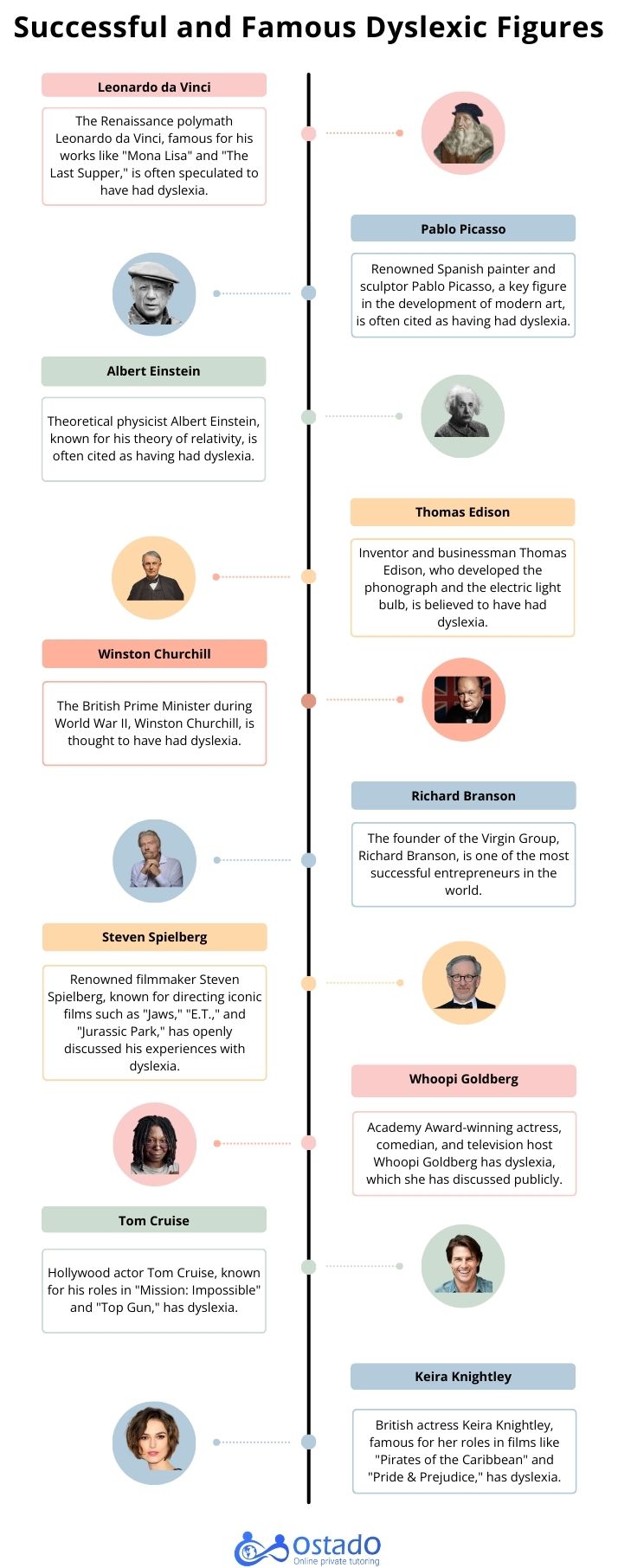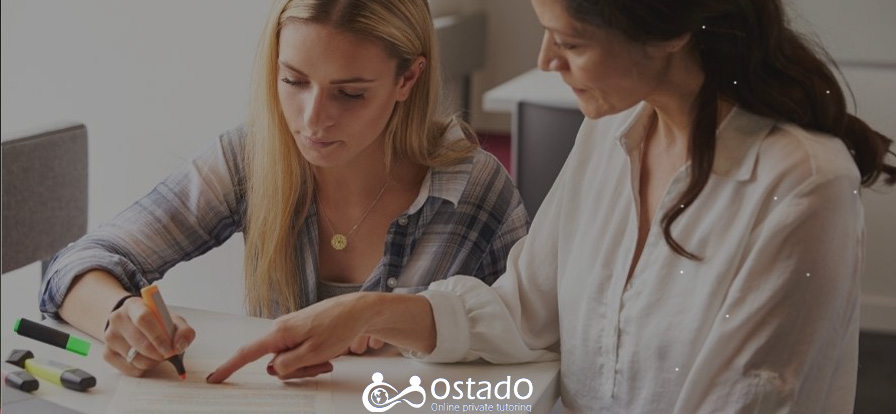Statistics show that “one out of ten people is diagnosed with dyslexia,” which translates into more than 780 million dyslexics around the globe. So, you’re not alone in your struggles with studying and learning pace. You should be proud of yourself for accepting the challenges of dyslexia and do your best to do as well as others. The very fact that you’re reading this post proves my point. Let’s see how you can handle dyslexia when revising for GCSE qualifications.
Am I Really Dyslexic? What Are the Symptoms?
Well, your experience in learning to read words and numbers and how difficult it is for you to make sense of a text can convey whether you’re dyslexic or not. You can use Self-Assessment Tools for Dyslexia to find out whether you need help for being dyslexic.

I must note that no matter how strongly you feel like being dyslexic, this is NOT your job to decide. You should consult your problems with an educational expert or a dyslexia specialist before jumping to conclusions. This is because symptoms of dyslexia overlap with other conditions, such as ADHD, Executive Dysfunction, Memory Impairment, Dyscalculia, and Emotional and/or Behavioral Disorders. Click to make sure “Is it dyslexia or something else?“
Dyscalculia is a “persistent difficulty” in understanding and working with numbers, which causes severe problems in Mathematics. You can get advice from a dyscalculia specialist by calling the British Dyslexia Association at 0333 405 4555. You can also find valuable guidelines on the best way to revise for maths here.
Revision Tips for Students With Dyslexia
If you’re struggling with dyslexia, you should consider the following 7 points to revise for GCSE exams with more ease and comfort.
Before I get to the points, I must say that you need to plan your revision and start at least six months before the exam season. Your plan must cater to your unique needs. This means that you should allocate more time to challenging topics and use revision techniques that work best for your learning style. Set realistic short-term and long-term revision goals and reward yourself when you realise them.
1. Be Confident!
Dyslexic students think and learn differently. A study by the Yale Center for Dyslexia & Creativity “found that in dyslexic readers, IQ and reading diverge.” This means that a dyslexic student can be highly intelligent and still struggle with reading. So, being dyslexic can be anything but a disorder; there is simply a difference in how the brain analyses things.
By way of explanation, the right side of the brain is in charge of holistic thinking, imagination, intuition, and creativity. On the other hand, the left hemisphere deals with languages, logic, mathematics, and analytical thinking. Now, the thing is that dyslexics tend to rely on the right hemisphere, and that’s why they struggle with coding and decoding a text.

2. Employ All Senses
Students with dyslexia have to collect all their strengths for a successful learning experience. This means that you should integrate different strategies based on your learning style to get the most out of your revision plan.
- Visual learners:
-
-
- Highlighting the text using a personalised colour coding system.
- Use sticky notes to annotate or summarise the text in short bullet points and take revision notes.
- Draw a mind map to visualise the connection between different concepts and key information.
-
- Auditory learners:
-
-
- Use text-to-speech and speech-to-text apps and assistants
- Record yourself summarising key points or reading aloud.
- Use audiobooks, revision podcasts, and audio files of the revision books.
-
- Kinesthetic learners:
-
- Read while walking.
- Stand in front of a mirror and explain what you’ve learnt using hand gestures and body language.
- Use a whiteboard and explain things as if you’re a teacher.
The Best Resources for Dyslexics
- Books:
- “The Dyslexia Empowerment Plan” by Ben Foss
- “Overcoming Dyslexia” by Sally Shaywitz
- “The Dyslexic Advantage” by Brock L. Eide and Fernette F. Eide
- Videos:
- “Dyslexia: Living with a Hidden Disability” by TED-Ed
- “How to Study with Dyslexia” by Anna Mascara (YouTube Channel)
- “Understanding Dyslexia” by California Dyslexia Initiative
- Podcast:
- Websites:
3. Learn in Groups
Collaborative learning is another effective revision strategy for dyslexic students. You can explain the concepts to other students to help them understand the concept better and reinforce your own understanding. Plus, you can share the workload; it’s a win-win strategy.
Additionally, being in an environment with people who share the same goals as you keeps you motivated and committed to your revision plan. By the way, it doesn’t have to be in person. You can join forums or communities to connect with other dyslexic students.
If you can’t rely on the help of your classmates or friends, you can always get help from a tutor. You can explain your condition to the tutor, and they will adapt their methods and resources to provide you with the best revision experience. Ostado’s GCSE tutors have extensive experience in the field and know just what’s right for each individual student. Book the first session for free and check it yourself.
4. Integrate Technology into Your Study Habit
Since it’s particularly difficult for you to read or write, you can use assistive technology and tools to save time and increase the productivity of your revision plan. Text-to-speech and speech-to-text apps and programmes are the best examples of these tools.
You can also use a planner to create a to-do list and organise your tasks. We have created free revision timetable templates to help you schedule your revision and keep track of your progress.
You can find some of the most practical apps and tools in the table below.
Mind mapping tool
5. Get Rid of Distractions
Choose a quiet place to do your revising. Customise your smartphone’s notification settings or put it in “do not disturb” mode when you want to revise your GCSE subjects. Based on the findings of a recent research article on the “brain drain hypothesis“, the mere presence of your smartphone in your visual field can be distracting, even if it’s turned off.
6. Break Down the Text
As a dyslexic, you don’t need to cover a whole topic in one learning session. Instead, you should break the topic into subtopics (chunking) and revise them separately. But chunking doesn’t stop at this point. Dyslexics have problems in memorising, sequencing, and retrieving long strings of information. So, you should even break down the sentences into smaller pieces, maybe bullet points, to facilitate the learning process.
Chunking is a powerful technique that helps dyslexic students improve their working memory and deepen their understanding of the materials they study.
7. Keep Revision Periods Short
It’s hard for students with dyslexia to concentrate on a topic for long. So, they should have more frequent breaks in their revision schedule. The Pomodoro Technique provides an excellent study pattern for students with dyslexia. You should do your best to focus on what you’re reading for 25 minutes and then let go of your mind to wander and daydream in the five-minute break. After repeating the cycle a couple of times, you can extend the breaks.
Bonus tip:
You may have difficulty with letters and words, but you’re compensated for other subjects. You will be successful in subjects such as Art and Design (Photography, Graphic Communication, etc.,) Music, Drama, and Dance. Just follow your heart! In short, you will shine in fine arts.
Exam Tips for Dyslexic Students
- If you want to get help from a reader or scribe, arrange this in advance.
- Manage your time to cover all questions. Don’t linger on a challenging question. If you have extra time, come back and deal with it at the end of the session.
- Familiarise yourself with the exam board specifications (exam format and mark schemes).
- Stay positive and believe in yourself. You put a lot of effort into revising for GCSEs, and you deserve success.

